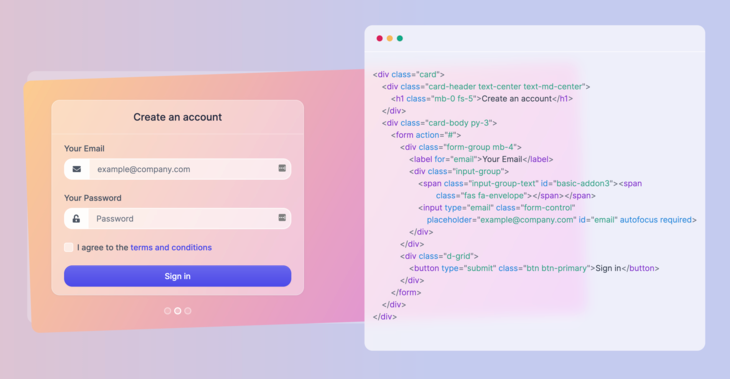Over the years, we’ve gathered that a lot of web designers have issues with winning new business, so we decided to create a definitive guide on the last and most important step of the process of acquiring new clients – business proposals.
In this article, we’ll cover the discovery meeting, how to choose which chapters to include in your proposal, and tips on how to write a high-converting web design proposal without a hitch.
Don’t skip the discovery session
Figuring out what kind of a website you want to design should be done before you start working on your proposal and it should be done during your discovery session. This is basically a meeting with your client in which you get to the bottom of their needs.
Prepare for the meeting with a list of questions. Take time to research your client, their industry, and previous work. That will help you improve your business relationship and prepare the questions you’ll want to ask. Considering most companies are working remotely nowadays, it’s best to find a webinar platform that’s reliable for this step.

Source: Unsplash
It’s vital to get to know what your client needs, even when they don’t know how to vocalize it simply because they don’t necessarily have the vocabulary. This is why you have to ask a lot of questions using understandable language and real-life examples.
Prepare a few different examples of design trends and explain to them which ones are predominantly used in their industry.
Ask them about their goals – do they want to refresh their online presence, why did they choose to go ahead with a website at this point, do they want to take their company in a new direction, etc.
Once you cover the needs and goals, ask them about their budget. This is important because it will help you price your services. If they don’t have a sense of the budget, tell them the range in which projects like theirs could be priced. Their reaction will give you a sense of how high (or low) you can go.
When to talk about yourself
After the discovery meeting, you should start working on your proposal outline straight away. You will be tempted to write about how amazing you are and why you’re the best choice for the job. However, don’t start your proposal with this type of content.
Firstly, write an introduction in which you define the problem and give a proposed solution. Use the wording your client used when describing their problem and don’t focus too much on placing blame or any type of negativity in general.
Once you’ve done that, explain without going into too much detail how you’re going to fix the said problem. Provide clear solutions that focus on the structure of the page, how you’re going to ensure that it’s fast, responsive and SEO optimized and how long it will take you to get done with the job.

Source: Unsplash
Then you can transition into a section about your previous work. You can include references or use some kind of social proof like a case study to showcase how you helped companies similar to theirs achieve their goals and what type of ROI they had from your work.
How to price your services
Let’s unpackage this. While a lot of developers and designers swear by the hourly fee, that type of pricing structure can lead you to procrastinate and severely underestimate your work.
By pricing hourly, you only put a price on the work you put out, avoiding the potential it has to bring huge amounts of value later on. Seeing how laying a good basis for the webshop is a big chunk of work and Google won’t index it right away, once the site gets a great position on search engines and gets a spike in sales, you’ll be losing out on the overall value of the project if you charge by the hour.
Your revenue needs to cover your costs (including software, your team, and business costs) as well as give you a significant profit margin.
With all that said, we suggest you charge by the value of the project and the best way to present your pricing table is to divide it into smaller sections. However, keep it understandable and short. You don’t want to confuse your client.
Once you reach the ending of your proposal, make sure to include a CTA. This will further motivate your client to reach out to you once they read everything and agree with your proposal.
The best way to get started on your proposal is to use a template you can easily customize and send to your client with a secure link that lets them pay the first fee with an integrated payment option and lets you check on whether they’ve opened your proposal and which part they spent the most time on.
Wrapping up
If you implement all these strategies into your web design proposal, you’ll definitely see results and gain more business. Remember, a business proposal can make or break even the best offer for a website redesign, so craft your proposals with great care and attention.
Author bio:
Petra Odak is a Chief Marketing Officer at Better Proposals, simple yet incredibly powerful proposal software tool that helps you send high-converting, web-based business proposals in minutes. She’s a solution-oriented marketing enthusiast with more than 5 years of experience in various fields of marketing and project management.



![10+ Best UI/UX Books that Every Designer Should Read [2025]](/blog/content/images/size/w960/2022/01/cover-blog.jpg)

